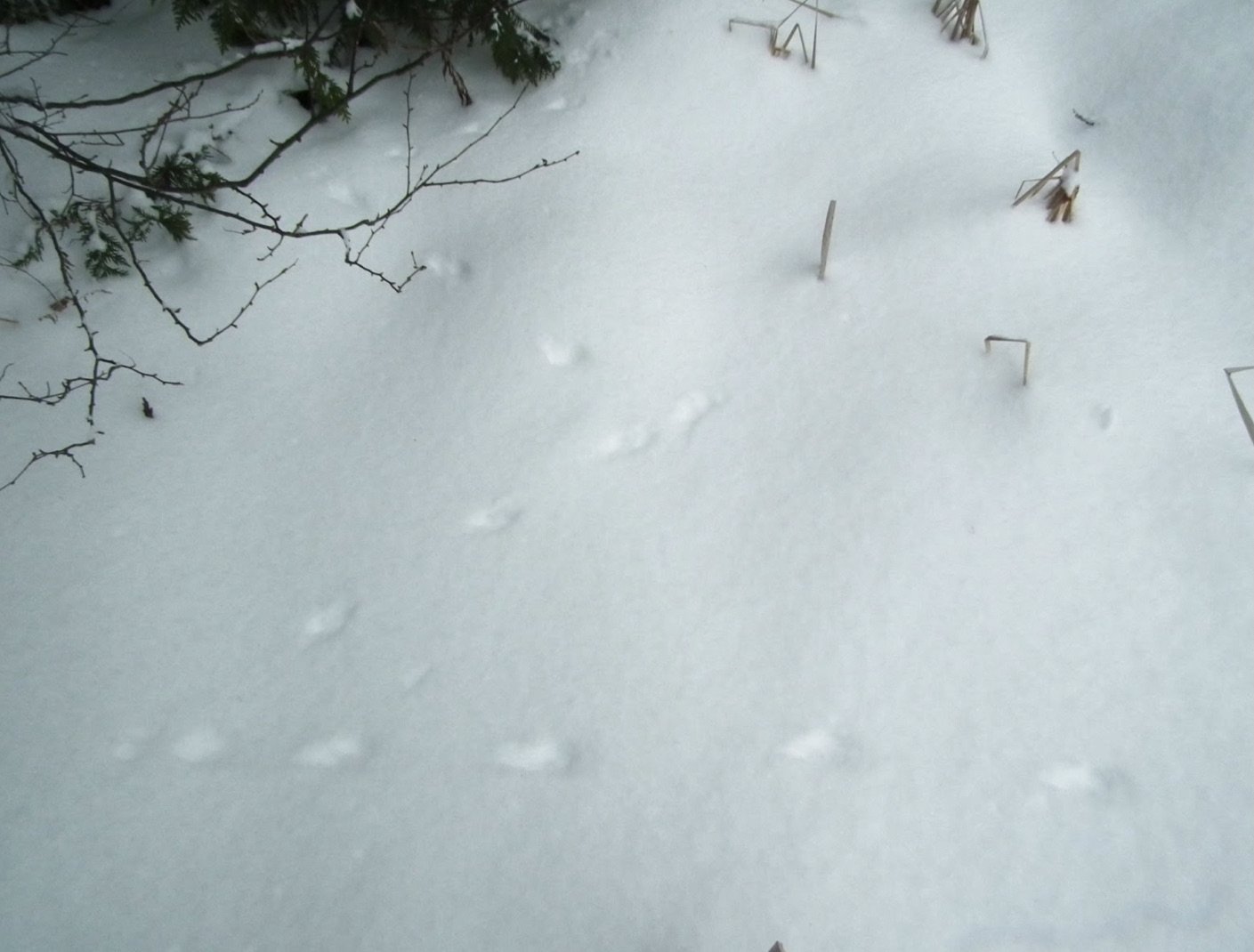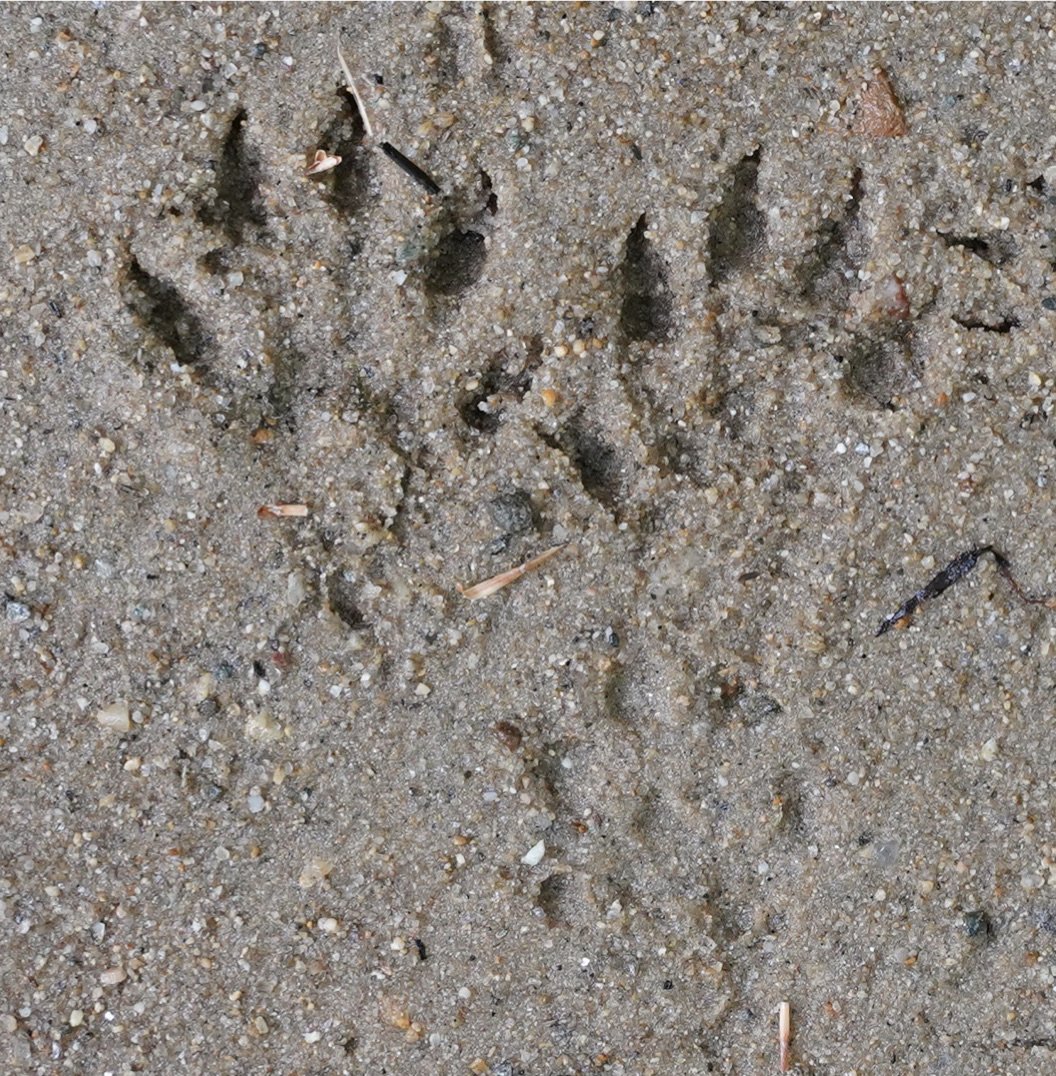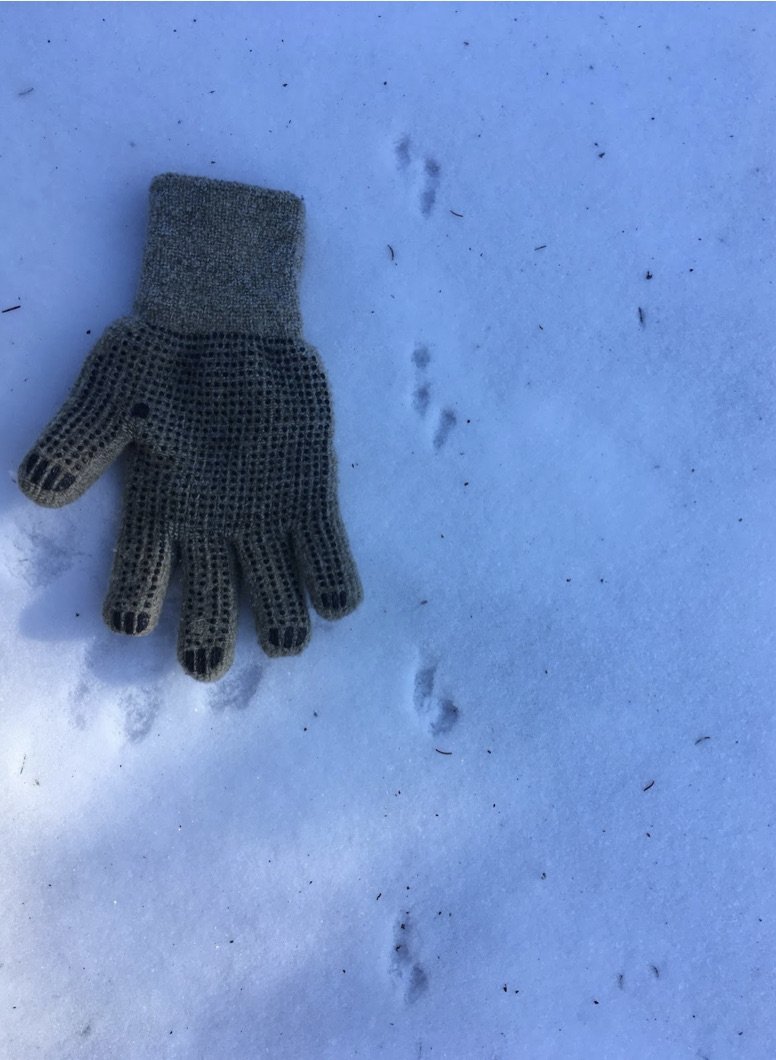Weasel tracking: a primer
photo 1: mink
As a naturalist, there’s almost nothing more fun than coming across a nice set of weasel tracks. They are often found erratically and energetically loping, bounding and sometimes even sliding across the landscape. But as wonderful as they are to encounter, they can be equally frustrating to tell apart. Hopefully this little primer can help with developing a process around identification of weasel tracks in Maine.
We have six species of mammals in the weasel family or Mustelidae, all sometimes referred to as Mustelids, in the state of Maine. In roughly descending order of size we have: River Otter, Fisher, Pine Marten, Mink, Long-tailed Weasel and Ermine. All of our weasels are carnivores, though otters and mink lean more towards fish and other aquatic prey. Tracks of weasels are usually distinguished from other types of mammals by number of toes (5 on fronts and hinds), track pattern and habitat. Their track patterns or gaits are most typically seen as lopes (photo 2 and 3), though they will bound or gallop when reaching top speeds and slow to a walk when investigating something. Species that are often confused with weasels include raccoon, striped skunk and squirrels depending on size.
Photo 2: Ermine Trail
Photo 3: Long-tailed Weasel Tracks
One important factor to keep in mind is that weasels have a high degree of sexual dimorphism in terms of size (see figure 1). For example, a male ermine may be twice the size of the female. According the Sheffeld and Thomas (1997) Long-tailed Weasels here in the northeast have a high degree of dimorphism as compared to the rest of the continent. This range of size between sexes makes track identification more of a challenge since a large male of one species may overlap in size with the female of a generally larger species. Overlap in track size will often leave us stuck deciding between two species, needing more information to make a definitive ID. The process of identification thus involves grouping weasels by size. The best measurement to take is typically the group lengths for lopes and bounds or the width of the front foot and hind foot.
Figure 1
Starting with the largest and moving our way down, the river otter and fisher (or fisher cat as they are often referred to as) are our largest weasels and are frequently confused. The best way to tell these apart is to look at the relative size of the fronts and hinds. Most mammals have larger front feet than hind feet to account for more weight in the front. Think of your dog or cat here; Fishers are the same. They have larger fronts than hinds. However, otters, due to their affinity for swimming, have larger hinds than fronts. Thus, if you can measure the front and hind of a mystery track and compare you will have an indication as to what species you are looking at. Other considerations would be looking for webbing between toes (indicates otter), tree climbing (indicates fisher) or sliding on snow and ice (fishers rarely slide).
photo 4: otter tracks, taken by Brendan White
Our mid-sized weasels include martens, mink and male long-tailed weasels. Considering habitat is key here. Martens are generally only found in the spruce/fir forests of northern Maine and above 2,000 feet, as in Baxter state park. They are arboreal and spend a great deal of time hunting in the trees. Mink are mostly found around wetlands; they are excellent swimmers and divers, though long-tailed weasels will also be found near water. Due to size and habitat overlap mink and long-tailed weasel are easily confused, here two characteristics to consider: fur appearing in the track (likely indicates long-tailed weasel) or outside hind toe far apart (may indicate mink). For reference, the widest the front track of a long-tail weasel gets is 3 cm, while the shortest width for the front track of a mink is 2.2 cm (Elbroch). If the track is in between those measurements then looking for other indicators is a good idea.
photo 5: mink tracks, taken by Brendan White
Lastly, our smallest weasels include female long-tailed weasel and ermine. This is perhaps the most challenging pair to parse. Again, it is important to measure the track width and group length first. For reference, the widest the front track of an ermine gets is 1.6 cm, while the shortest width for the front track of a long-tailed weasel is 1.9 cm (Elbroch). Here are a few other characteristics that help in differentiating the two: track pattern sometimes a rabbit like bound (may indicate long-tailed weasel), evidence of swimming (indicates long-tailed weasel), long stretches of burrowing in deep snow (may indicate ermine), toe pads chipmunk or squirrel like and without fur (may indicate ermine), tracks relatively equal in length and width i.e. more circular (may indicate ermine).
photo 6: Ermine trail
photo 7: Ermine tracks
As you can see, identification of Maine’s weasels by track can be a difficult yet fun task to the dedicated observer. Like with other genres of natural history, practice and experience cannot be replicated or replaced. It is my hope that this primer might in some way aid you in your wildlife tracking endeavors or perhaps inspire you to look a little closer to the tracks and trails you find in the field.
*track terminology from Mark Elbroch’s North American Mammal track and sign and by CyberTracker International
Elbroch, M. & McFarland, C. (2020) Mammal Tracks and Sign: A Guide to North American species. Stackpole Books
Sheffeld, S., & H. Thomas .1997. Mustela Frenata. American Society of Mammalogists: Mammalian Species No. 570








